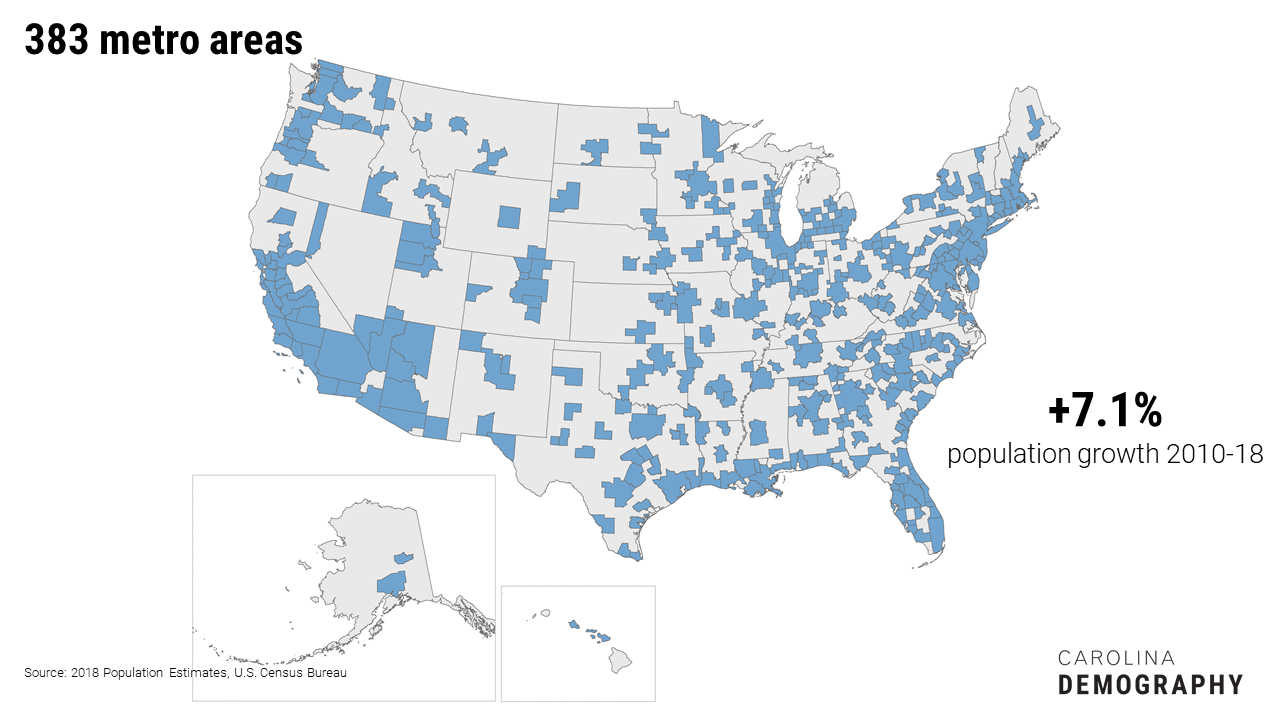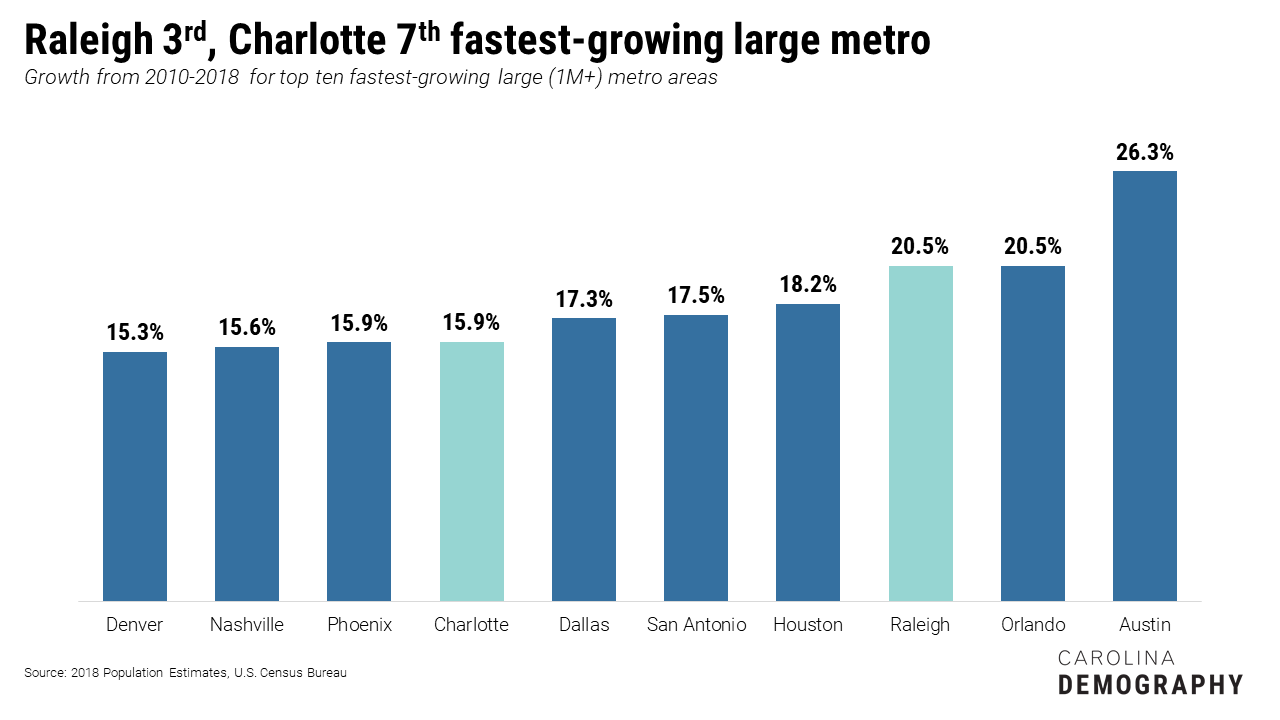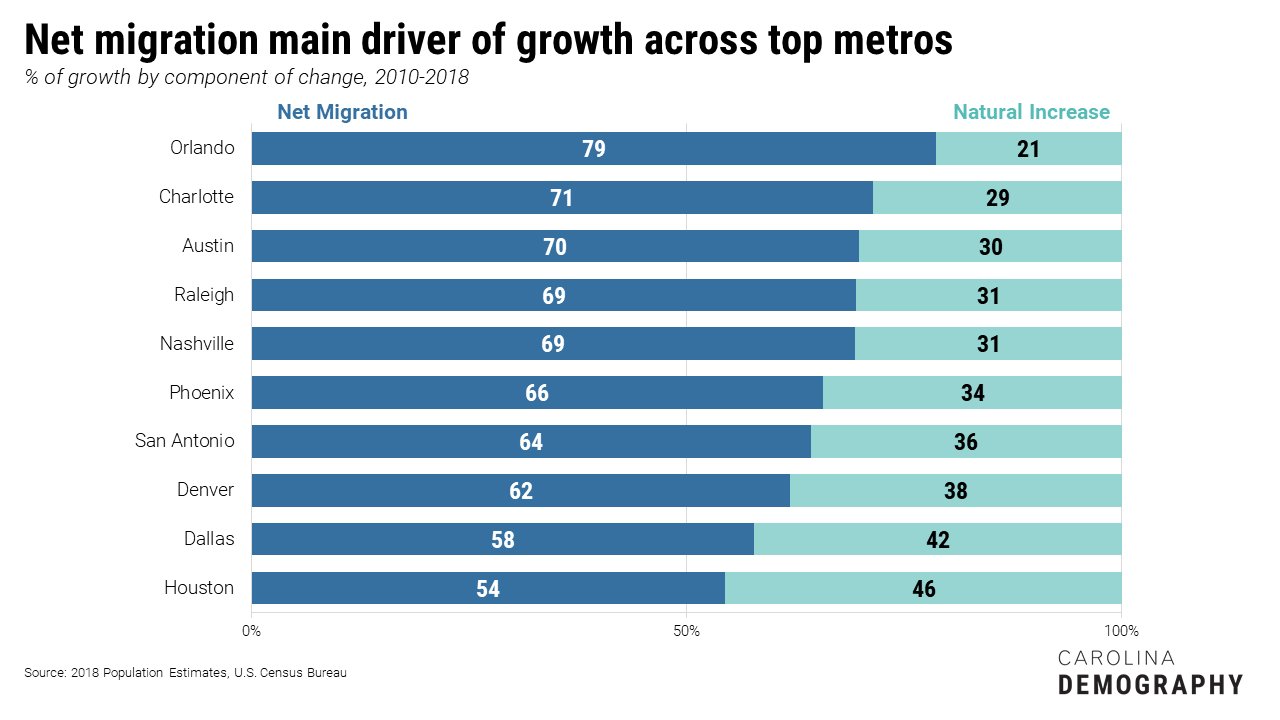Raleigh and Charlotte are among fastest-growing large metros in the United States

Nationally, there are 383 metropolitan statistical areas (MSA), which are defined as an economically integrated set of counties with a core central city with a population of 50,000 or more. They range in size from Carson City, Nevada (55,414) to the New York-Newark-Jersey City MSA (19,979,477) which crosses New York, New Jersey, and Pennsylvania. Within North Carolina, there are 17 unique metro regions, ranging from Goldsboro (123,248) to Charlotte-Concord-Gastonia (2,569,213 across NC and SC).
With a combined population of 281 million, nearly seven of every eight Americans lived in one of these 383 metro areas in 2018. Between 2010 and 2018, metro areas grew at a combined rate of 7.1%, faster than the national growth rate of 6.0%.

Fifty-three of these MSAs are what we might consider “large” metropolitan areas, with a population of one million or more residents. Overall, these larger metro regions grew at a faster pace than the growth rate for metro areas, growing in size at a combined rate of 7.8% since 2010.
Focusing further on potential peer metros, we can also look at large and fast-growing MSAs, with “fast-growing” defined as growing 12% or more since 2010, or more than twice as fast as the national average. Nationally, there are sixteen metros that met this definition. Two of them—Raleigh and Charlotte—are in North Carolina. Texas and Florida are the only other states with multiple large and fast-growing metro areas.

As a group, these large and fast-growing metros grew by 16.3% since 2010. Austin (26.3%) was the fastest-growing large metro, followed by Orlando (20.5%), Raleigh (20.5%), Houston (18.2%), and San Antonio (17.5%). Charlotte was the 7th fastest-growing large metro, increasing by 15.9% between 2010 and 2018. Numerically, Charlotte gained 352,000 new residents since 2010 while Raleigh grew by 232,000.
Demographically, growth can happen in one of two ways. First, more people can move into an area than move out. This is referred to as net migration. Second, an area can have more babies born than residents die. This is referred to as natural increase. Both of these processes drove growth in the nation’s large, fast-growing metros, but net migration was the more important factor.

For each of the top ten fastest-growing large metros, net migration accounted for more than half of all growth. Net migration was the largest share of growth in Orlando (79%), followed by Charlotte (71%), Austin (70%), and Raleigh (69%).
We know where these people are moving to, but where are they coming from? We’ll look at that in a future post.
If you have demographic questions about NC that you’d like answered, email demography@unc.edu and we may touch on the topic in a future blog post. And if you’d like to receive monthly updates from Carolina Demography, you can subscribe to our newsletter which touches on demographic trends from across the state.
Need help understanding population change and its impacts on your community or business? Carolina Demography offers demographic research tailored to your needs.
Contact us today for a free initial consultation.
Contact UsCategories: Carolina Demographics, Migration
Tags: migration, net migration, North Carolina, population change, population growth

The Center for Women’s Health Research (CWHR) at the University of North Carolina School of Medicine released the 12th edition of our North Carolina Women’s Health Report Card on May 9, 2022. This document is a progress report on the…

Dr. Krista Perreira is a health economist who studies disparities in health, education, and economic well-being. In collaboration with the Urban Institute, she recently co-led a study funded by the Kate B. Reynolds Foundation to study barriers to access to…

Our material helped the NC Local News Lab Fund better understand and then prioritize their funding to better serve existing and future grant recipients in North Carolina. The North Carolina Local News Lab Fund was established in 2017 to strengthen…
Your support is critical to our mission of measuring, understanding, and predicting population change and its impact. Donate to Carolina Demography today.